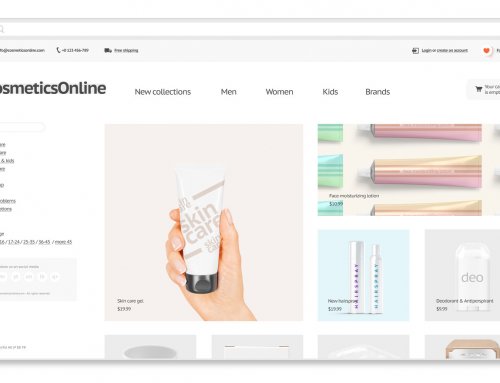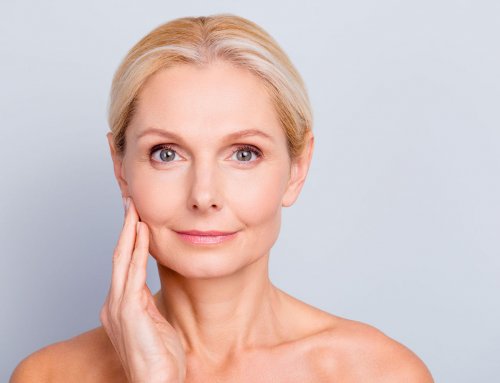As multicellular organisms, we have bodies comprised of cells that require proper communication in order
to carry out natural processes and maintain vitality. Communication, within and between these cells, occurs through the exchange of lipids, protein/peptides, or even gases. Of these, communication using proteins/ peptides is of special significance due to its flexibility and specificity, as well as involvement in important cell processes such as wound healing, pigmentation, cell proliferation/migration, inflammation, and cell structure synthesis and regulation (Alberts, 2014).
Both protein and peptides are chains of amino acids, with peptides being of smaller size (less than 50 amino acids) than proteins. During cellular communication, signalling proteins/peptides act as messengers to regulate cellular machinery. The whole chain, however, is often not required; a small, key part of the molecule is sufficient to pass on the message. One can imagine the whole protein/peptide as a messenger, and this key part as the letter to be delivered – as long as the letter arrives, the message had been conveyed.
These ”letters”, often only 3 – 10 amino acids long, are the “bioactive peptides”. Bioactive peptides can perform a plethora of different functions, including boosting collagen production and skin elasticity, smoothing wrinkles, reducing pigmentation, alleviating inflammation and rosacea, improving acne-prone skin and much more.
Before we continue, it is important to distinguish bioactive peptides from protein hydrolysates such as hydrolyzed collagen or soy protein, commonly marketed as peptide ingredients in skin-care. Hydrolyzed proteins are protein molecules broken down into smaller amino acid chains. While technically peptides, they are a mish-mash of amino acids – a far cry from active peptides, which are very specific sequences. The random peptide mix may have some moisture retaining effect, as peptides tend to form films on the skin. However, they do not offer the extensive range of benefits that active peptides do.
So how are these active peptides identified and chosen for use in the beauty industry? Often, the base protein is first isolated from basic research which focuses on cell signalling. This was first inspired by research into wound healing, where peptides resulting from damaged tissue protein was found to trigger collagen synthesis (Tran KT, 2004).
A more colorful example involves the identification of a 22 amino acid peptide from Wagler’s pit viper venom. This peptide causes paralysis by interfering with nicotinic acetylcholine receptors at the muscle-nerve junction (Molles BE, 2002), and a synthetic peptide was produced to mimic the toxin. This active peptide is currently marketed as Syn-StarTM, and claims to inhibit muscle contraction through a Botox-like effect – without an injection. Other well-known examples are collagen stimulating Palmitoyl-pentapeptide-3, the active ingredient in MatrixylTM and wrinkle reducing Acetyl Hexapeptide-3, the active ingredient in ArgirelineTM (Blanes-Mira, Blanes-Mira, C). While some of the peptides’ effects have been well proven (Jones RR, 2013), newer peptides are still in need of independent studies to better substantiate their claim. Overall, however, the field of active peptides look very promising.
Initially there were some concerns about the use of active peptides in the skin care industry. Firstly, amino acid compounds gladly mingle with water but have difficulty playing nice with lipids. This makes it difficult for peptides to penetrate the stratum corneum, which consists of a lipid matrix, in order to reach its target audience: the dermis. This issue has largely been resolved by advancements in delivery technology, which include carrier liposomes or attachment of lipid tails to peptides to make active peptides partially lipid- soluble, and carrier solvents such as ethoxydiglycol to enhance penetration.
A second issue is that the peptides may have a systematic effect once they enter the blood stream travelling to, and causing undesirable effects throughout, the body. Paradoxically, this issue is resolved by another perceived weakness, that peptides are rapidly metabolized by naturally occurring enzymes. The human body is full of active enzymes which carry out biological functions, and act as a defence system against microbial infections. This results in these stray peptides being swiftly ”mopped- up” so all that remains is the intended localized effect. But it’s worth adding the caution here, “Your Peptides May Vary”!
Another concern stems from the highly specific nature of the peptides. The specificity necessitates synthetic production in order to be viable, which would appear to skyrocket the cost of production, along with raising concerns that they are “not natural”.A more colorful example involves the identification of a 22 amino acid peptide from Wagler’s pit viper venom. This peptide causes paralysis by interfering with nicotinic acetylcholine receptors at the muscle-nerve junction (Molles BE, 2002), and a synthetic peptide was produced to mimic the toxin. This active peptide is currently marketed as Syn-StarTM, and claims to inhibit muscle contraction through a Botox-like effect – without an injection. Other well-known examples are collagen stimulating Palmitoyl-pentapeptide-3, the active ingredient in MatrixylTM and wrinkle reducing Acetyl Hexapeptide-3, the active ingredient in ArgirelineTM (Blanes-Mira, Blanes-Mira, C). While some of the peptides’ effects have been well proven (Jones RR, 2013), newer peptides are still in need of independent studies to better substantiate their claim. Overall, however, the field of active peptides look very promising.
If manufactured properly, however, the peptides would be of high purity. As mentioned earlier, this improves efficiency, meaning only a miniscule amount, often in the micromolar range (0.001wt%), is required to effective (Lintner K, 2000). Also, the cascading machinery of cell signaling frequently results in an extended, enhanced effect from just a small amount of ligand/signal (Alberts, 2014). Furthermore, the purity and specificity of these peptides allow combination for synergistic action, such as broad spectrum anti-acne formulations, combining anti-inflammatory peptides with bacterial-debris neutralizing peptides.
It should be noted that synthetically produced active peptides are bio-memetic, ie. they are designed to mimic what a human body would produce naturally. They undergo extensive testing before being released to the marketplace which is desirable.
With their safety, high efficacy and flexibility, active peptides constitute an important part of a formulator’s tool kit. As new data emerges from research, it will be fascinating to see what new options and opportunities lie ahead.
With their safety, high efficacy and flexibility, active peptides constitute an important part of a formulator’s tool kit. As new data emerges from research, it will be fascinating to see what new options and opportunities lie ahead.
References
Alberts, B. (2014). Molecular Biology of the Cell 5th Edition. New York, NY: Garland Science, Taylor and Francis Group.
Blanes-Mira, C. (Blanes-Mira, C, Int J Cosmet Sci Int J Cosmet Sci). A synthetic hexapeptide (Argireline) with antiwrinkle activity. Int J Cosmet Sci, 24(5), 303–10. Retrieved 6 13, 2017, from Blanes-Mira, C
Jones RR, C. V. (2013). Collagen stimulating effect of peptide amphiphile C16- KTTKS on human fibroblasts. Molecular Pharmacology, 10(3):1063-9.
Lintner K, P. O. (2000). Biologically active peptides: from a laboratory bench curiosity to a functional skin care product. International Journal of Cosmetic Science, 22(3):207-18.
Molles BE, T. I. (2002). Residues in the epsilon subunit of the nicotinic acetylcholine receptor interact to confer selectivity of waglerin-1 for the alpha-epsilon subunit interface site. Biochemistry, 41(25):7895-906.
Tran KT, G. L. (2004). Extracellular matrix signaling through growth factor receptors during wound healing. Wound Repair and Regeneration, 12(3):262-8.

David Cheng, M.Sc.
Research & Formulation Chemist Vitelle Labs






You must be logged in to post a comment.